1. About us
1.1. Vision / aspirations
1.1.1. "It just works"
1.1.2. High awareness
1.1.3. Trusted
1.1.4. Part of the background
1.2. Purpose
1.2.1. Visibility and governance
1.2.2. Provide tools and systems
1.2.3. Project/programme support
1.3. Principles / Values
1.3.1. Customer focus
1.3.2. Care for information
1.3.3. Flexibility and responsiveness
1.4. Roles
1.4.1. Senior lead
1.4.2. Office & system manager
1.4.3. Project support / Administration
1.4.4. Project experts
2. Tools & systems
2.1. Intranet
2.1.1. "Transformation" website
2.1.2. Links to/from relevant pages
2.2. Smartsheet
2.3. Sharepoint
2.4. Mindmeister
2.5. MS Project
2.6. Trello
2.7. OneNote
2.8. Excel
2.9. Logic models
3. Written guidance and support
3.1. Recording an idea
3.2. Starting a project
3.2.1. Roles and responsibilities
3.2.2. Glossary
3.2.3. Contact details
3.3. Planning a project
3.3.1. Project planning tips
3.3.2. Change and human factor tips
3.3.3. Specialist support
3.4. Delivery and reporting on progress
3.4.1. Status reporting
3.4.2. Risk management guidance
3.4.3. Risk management tips
3.4.4. Financial reporting
3.5. Project closure and review
3.6. Documented processes
3.6.1. Project governance and flow charts
3.6.2. Create a new project
3.6.3. Project sheet set-up
3.6.4. Change project scope
3.6.5. Close a project
4. System maintenance
4.1. User administration
4.1.1. Accounts and access
4.1.2. Permissions changes
4.1.3. Group changes
4.2. Content administration
4.2.1. Tidying old sheets
4.2.2. Ensuring consistency of templates
4.2.3. Ensuring links correct
4.3. Template development
4.3.1. Governance/framework changes
4.3.2. Language changes and consistency
4.4. Reminder administration
4.4.1. Update requests for people with few projects
4.4.2. Emails for people with many projects
4.5. Archiving & recovery preparedness
4.6. Management of system issues and downtime
4.7. Data quality checking
4.8. Financial components
4.8.1. Report development
4.8.2. Data structure developments
4.8.3. Data integrity review and resolution
4.9. System development
4.9.1. Refining interface and processes
4.9.2. Responding to changes in system capabilities
4.9.3. Performance improvement
5. Services
5.1. Available to all
5.1.1. Single point of contact
5.1.1.1. Telephone
5.1.1.2. Team email
5.1.1.3. Face-to-face
5.1.1.4. Available 9-5, 7 days a week
5.1.1.5. Clear roles & scope of advice
5.1.2. Library of existing projects, learning points and best practice
5.1.3. Source of guidance, expertise & support
5.1.4. Link to internal and external systems and support
5.1.5. Collate ideas and project details
5.1.6. Support collaboration, team-working and documentation management
5.1.7. Encourage standardised but flexible ways of working
5.1.8. Automated reminders and data collection
5.1.9. Make standard templates available
5.1.9.1. Project start-up, inc: QIA E&D
5.1.10. Reporting
5.1.10.1. Boards
5.1.10.2. Portfolios/Teams
5.1.10.3. Programmes
5.1.10.4. Individuals
5.1.11. Share and link information with support functions (finance/BI)
5.2. On request
5.2.1. Planning advice
5.2.1.1. Projects
5.2.1.2. Programmes
5.2.2. Programme/portfolio management
5.2.3. Provide project management resource
5.2.4. Project reviews (alignment with strategy, quality, financial robustness, engagement, etc)
5.2.5. Individual project advice
5.2.6. Close individual and team support
5.3. Generally out of scope
5.3.1. Responsibility for agreeing project objectives
5.3.2. Completing project documentation
5.3.3. Project management and accountability for outcomes
5.3.4. Financial and activity modelling (although we will link to teams who can help)
6. Process management
6.1. Registration of projects
6.2. Capturing core project details
6.3. Project plans
6.4. PIDs
6.5. QIAs
6.5.1. Scoring
6.5.2. Reporting
6.5.2.1. Execs
6.5.2.2. Quality assurance committee
6.6. Equality and diversity
6.7. Information governance
6.8. Reporting and oversight
6.8.1. EDG
6.8.2. CMOG
6.8.3. Finance Committee
6.8.4. Board
6.9. Data integrity and quality management
7. Service users (Stakeholders)
7.1. Boards & committees (EDG)
7.1.1. Oversight
7.1.2. Governance
7.1.3. Coordinate
7.2. Accountable individuals
7.2.1. Sight of their area
7.2.1.1. Activity
7.2.1.2. Planned outcomes
7.2.1.3. Status
7.2.2. Governance
7.2.3. Means to escalate (up/down)
7.3. Project managers/leads
7.3.1. Time/capacity
7.3.2. Expertise
7.3.3. Coaching
7.3.4. Connections between stakeholders
7.3.5. Tools
7.3.6. Simplicity
7.3.7. Sign-posting
7.3.8. Methodology
7.3.9. Means to report progress
7.3.10. Means to escalate up/down
7.3.11. Governance
7.3.12. Admin support
7.4. Programme/ portfolio leads
7.4.1. Sight of their area
7.4.2. Governance
7.5. Wider staff (including new project managers)
7.6. Support services (change management, finance, BI, etc)
7.6.1. Tools
7.6.2. Information
7.6.3. Means to escalate up/down
7.6.4. Governance
7.6.5. Efficiency & effectiveness
7.6.6. Means to communicate/educate/engage
7.7. Statutory organisations & regulators
7.7.1. Reports
7.7.2. Urgent action
7.7.3. Transaction support
7.7.4. Identify interdependencies
7.7.5. Information sharing
7.8. Engagement
7.8.1. Is the organisation asking or telling people to use the PMO?
7.8.2. Clear organisational sponsorship
7.8.3. Describing/selling the benefits
7.8.4. Barriers
7.8.4.1. People conflating project planning issues with systems
7.8.4.2. Unclear priorities / mixed messages
7.8.4.3. Business
7.8.4.4. "More" systems
7.8.5. Experiences & feedback
